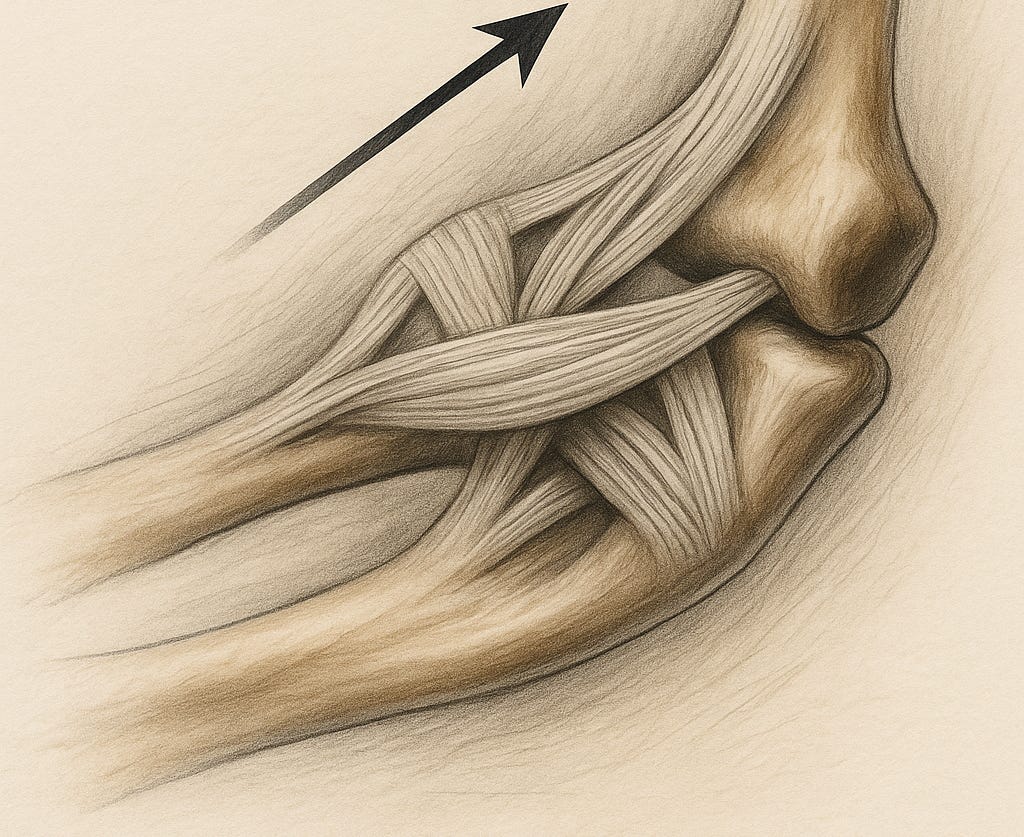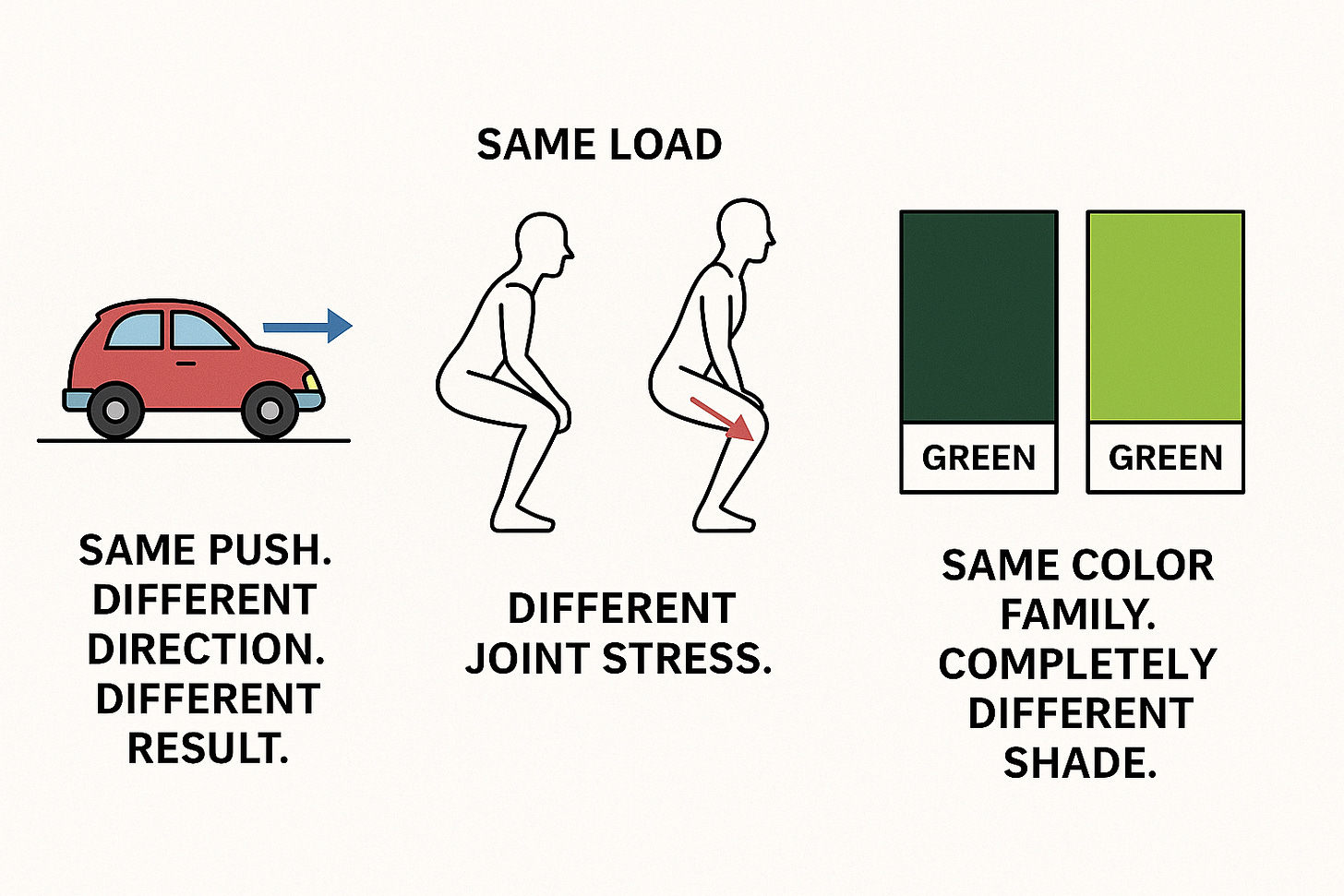Force Isn’t Just “How Much” — It’s Where and Which Way
Rethinking Force Through the Lens of Physics
We often talk about force like it’s just a number.
“How much weight did you lift?”
But force is a vector—it has magnitude, direction, and point of application. It cannot be explained by a single number alone.
Vectors go beyond quantity; they add crucial information about direction. They’re foundational for understanding real-world phenomena.
Let me show you what I mean with three examples starting with the simplest:
1. If you push your toy car from the back, it goes forward. Push from the side, and it turns. Same push, different direction.
2. You and your friend both do single-leg squats. Same load. But your knee collapses inward, and theirs doesn’t. That’s a vector problem—same weight, different force direction and tissue loading.
3. Force has magnitude, direction, and application. If you're only programming load generally, you're using green without knowing if it’s forest green or lime. The nuance is the outcome.
Training needs to evolve to reflect that force is a vector. Without this shift, both injury management and training effects stay broad, lacking the specificity that drives meaningful tissue change. And the upper limit of adaptation—especially for joints and connective tissues—will remain untapped.
If this sparked a question or you'd like to hear more on a related topic, send me a note—or share, comment, or pass it along to someone who might want to learn more.
If you’re interested in 1:1 training or are an FRS® provider looking for guidance, visit www.theartofstrong.com.
If you’re a fitness professional or manual therapist interested in our courses, visit www.functionalanatomyseminars.com.


